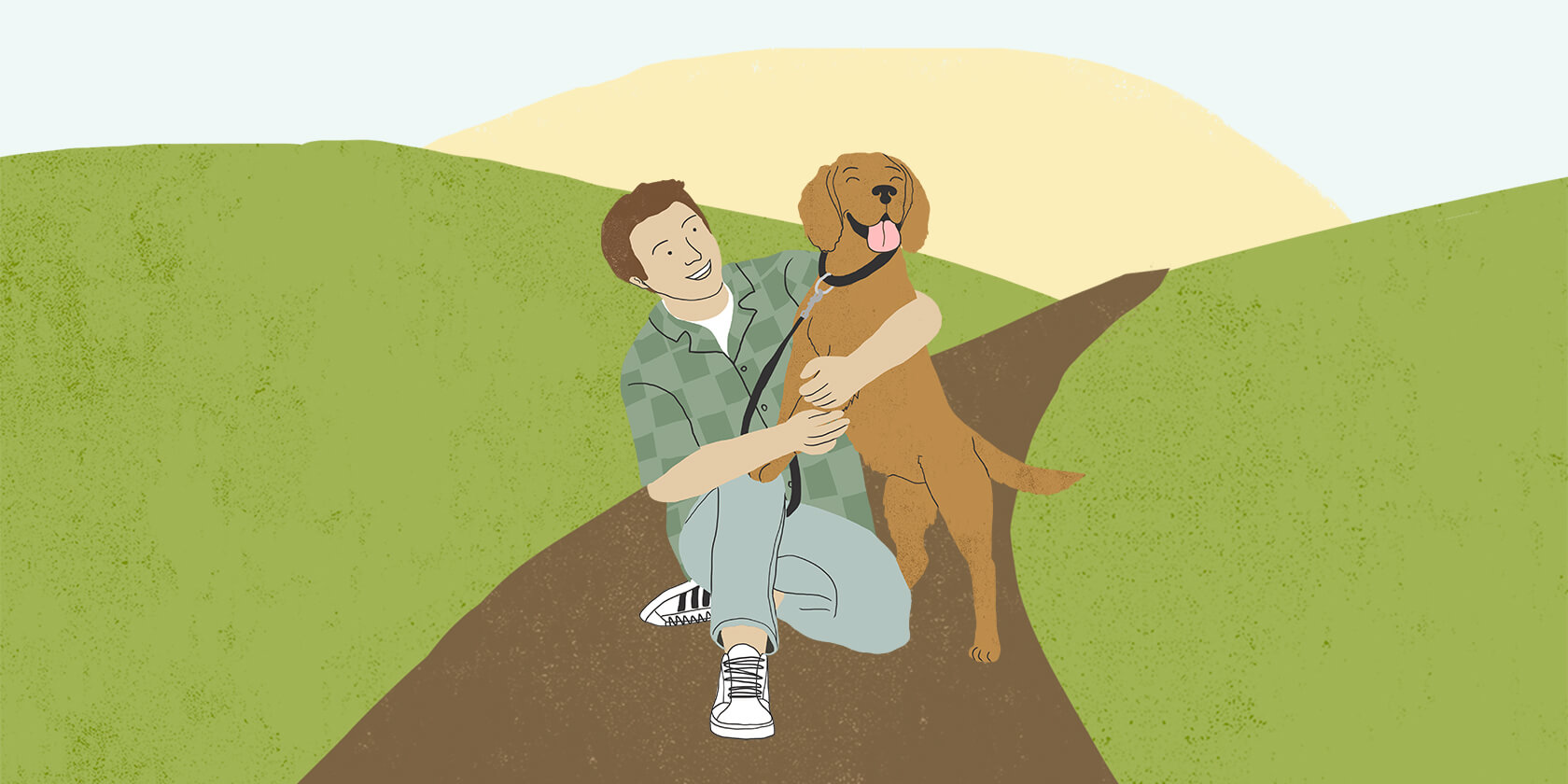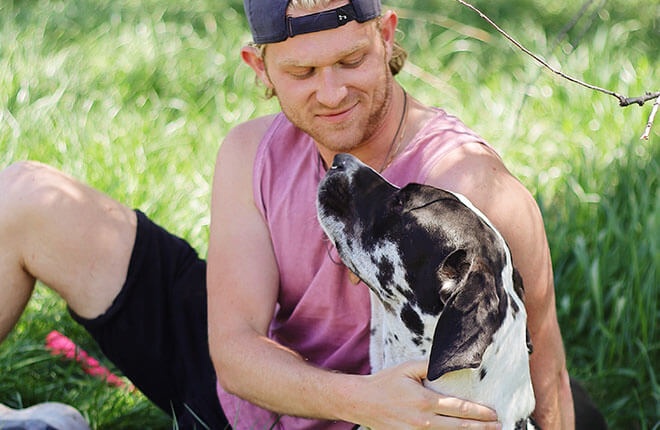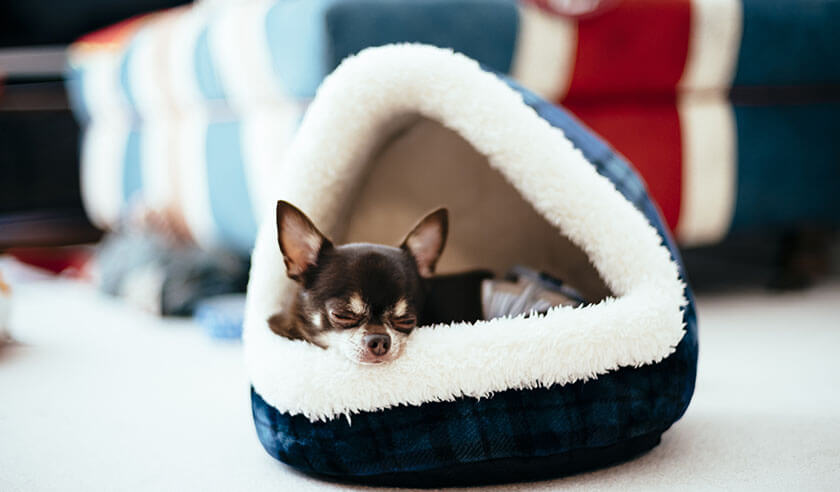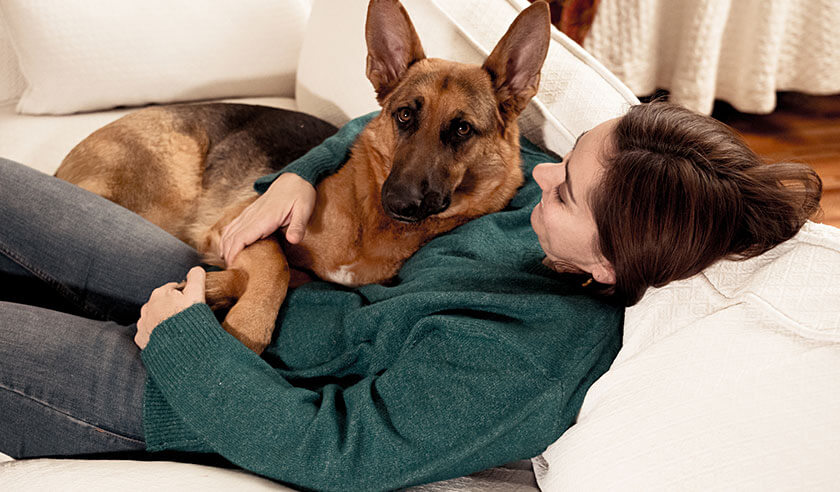Having the trust of our canine companions is an honor we have as their caregivers. But what if your dog has gone through an experience that makes trust difficult for them? Is there anything you can do to help them feel safe, confident, and loved enough to trust you? Absolutely. With a little time and patience, you can start to knock down the walls your dog has built up.
Reasons Your Dog Can Have Trust Issues
Although dogs are known for their unconditional love, many things can impact their ability to trust people — even the person caring for them. This can range from lack of socialization as a puppy, not being exposed to sights and sounds like car rides, children, and fireworks, to emotional scars from a history of abuse or surviving a traumatic event. Also, genetics can make some dogs more predisposed to being fearful. And a dog in a brand new situation, like recent adoption, may take some time to trust and warm up to unfamiliar people, a different home, and a change in routine.
How Trust Impacts a Dog’s Mental Well-Being
Dogs that appear to trust you do so because they are not fearful or anxious around you or in their environment. Building trust is all about making your dog feel safe. Trust provides a dog with a level of certainty that interacting with you will result in something good happening. So, those interactions not only increase, but trusting dogs will actually seek out opportunities for interactions with those they trust. This also creates more confidence in your dog.
On the other hand, a dog that is anxious and fearful will appear not to trust you and may shy away from loving gestures like petting, be unwilling to engage in play and other fun activities, and lack excitement when greeting their human companion coming home at the end of the day. Dogs that are anxious and fear full may hide from you or others and show no interest in interacting. If you try to force these dogs to interact with you they may growl, bark, nip at you or try to bite you, so it’s very important to read your dog’s behavior and not force them into activities.

How to Build Trust with Your Dog
Building trust takes time and patience, but there’s a lot you can do to help your dog feel more comfortable and trusting with you. Depending on your dog’s specific situation and how they show their trust issues, some of the following tips should help you get the ball rolling.
Learn to read their body language. A dog that is happy and ready to greet you will have a relaxed body and face, hold their tail high, and wags their tail back and forth. A dog that is fearful and anxious will have a tense body, hold their tail low or tucked under them, may avoid eye contact, pant, pace or show any of the signs listed below.
Notice other signs of fear and anxiety. These include cowering, carrying ears low or flat, standing still and stiff or moving slowly, a curling lip, growling, raised hackles, trembling, turning away, whining, yawning, or lip licking. If your dog shows signs of severe fear and anxiety (such as growling, nipping, biting, a frozen or stiff stance, or running away) set up an appointment with your veterinarian for evaluation and recommendations.
Let your dog determine the pace. Go at a speed your dog is comfortable with. Rushing or pushing past their comfort level will slow progress.
Respect your dog’s space. You may want to shower your dog with unadulterated affection. But shy and skittish dogs may not be quite ready for this. Give it some time, move slowly, avert your eyes, and talk quietly.
Approach the dog at their level. Towering over dogs can cause them to be fearful and anxious, so it’s important to get down to their level. Sit on the floor or squat down so that you are at eye level with them. Keep a bit of distance between you and the dog and ignore them until they come to you.
Let your dog come to you. When your dog approaches, respond with a calm, happy voice and reward them with a food treat. Notice how your dog takes the treat. If they take it from you in a rough manner and or drop the treat, that is a sign that they are anxious and fearful. Do not try to touch the dog — instead talk to them softly and offer more a few more treats. Then let them have their space. If they gently take if from you and immediately eat it, then you can proceed, If they allow it, pet them by extending your hand from underneath, gently stroking their chest or chin. This underneath approach is important because a hand raised over a dog’s head can be scary for them.
Observe your dog as you touch them and try using the "consent test" to see if your dog is comfortable with the interaction. Count to three while petting them. Then stop and see if they lean in for more petting or show you, in some other way, that they're enjoying the attention. If they choose to move away, growl, adopts a stiff stance, or shows any of the signs of fear and anxiety mentioned above, let them end the interaction with verbal praise. Give them their space. This helps build trust as you show your dog that you "listen" to their body language and don't overwhelm them with physical touch if they don't want it.
Be consistent. This promotes predictability, which fosters trust. Maintain a consistent routine with things like feeding schedule, walk times, and play sessions. This allows your dog to have the same expectations throughout their day, building their confidence and reducing any unexpected changes that night upset their sense of well‐being. All family members should be part of this consistency, including using the same words and hand signals for commands.
Provide a safe space. Dogs benefit from having their own space — one that is safe and quiet, where they can retreat from people and other pets. Let your dog choose their safe space and never invade this area or use it for punishment. Once they have chosen their safe place, you can make it a comfortable place for them to retreat to by placing a bed or blanket and toys in this area.
Engage in trust-building activities. Some ideas of activities that work to build trust with your dog include:
- Create positive associations with your presence by dropping a delicious treat every time you, or other family members, walk by your dog. They don’t have to do anything. They’re just learning to equate people with food.
- When your dog is calm and relaxed, reinforce this behavior with praise and treats.
- Play, play, and more play! Play allows the dog to forget about stress and releases “feel-good” hormones, like dopamine. As long as the dog is enjoying the playtime, it acts as a definite confidence builder.
- Basic shaping games are a good way to build trust. The goal is to work toward the desired behavior by rewarding any tiny movement toward that behavior. For example, if the desired behavior is to have the dog come to you, sit on the opposite end of the room. When the dog turns their head, extends a paw, shifts their weight, or makes any movement at all, calmly say “yes!” and then toss a food treat to them. After doing this about five times in a row, toss the treat so it lands a few inches from the dog but closer to you. Repeat as your dog comes closer and closer to you.
Begin rewards-based training. Start with something simple, like asking your dog to sit, and then reward with lavish verbal praise and a favorite food treat. Do this several times a day. You can gradually add other commands, like stay, shake, and down. Keep training sessions short, use a happy voice, and make it fun! Remember, the object is to build your dog’s confidence, not have a perfectly behaved dog.
Maintain a confident, calm demeanor and lead by example. Dogs can pick up on the emotions, positive and negative, of the people around them. If you encounter something that your dog considers threatening, remain calm, talk softly and gently, and quickly remove your dog away from the threat.
Professional support. You are not alone. If you need help, reach out to a professional — either a veterinarian with expertise in behavior or a certified canine behavior consultant. Your family veterinarian may be able to recommend someone in your area.
Building a dog’s trust and confidence is really a matter of helping them overcome their anxieties and fears. Depending upon the number and extent of their fears, this can be demanding of your time and emotional energy, especially with dogs who have been rehomed several times, are predisposed to fear and anxiety, have experienced a traumatic event or have been abused. Even encouraging the spirit of a newly adopted dog can be challenging. However, the effort is worth it — gaining your canine friend’s trust means you will have a stronger, deeper, and more meaningful relationship.
ZPC-01230R1





.jpg)

